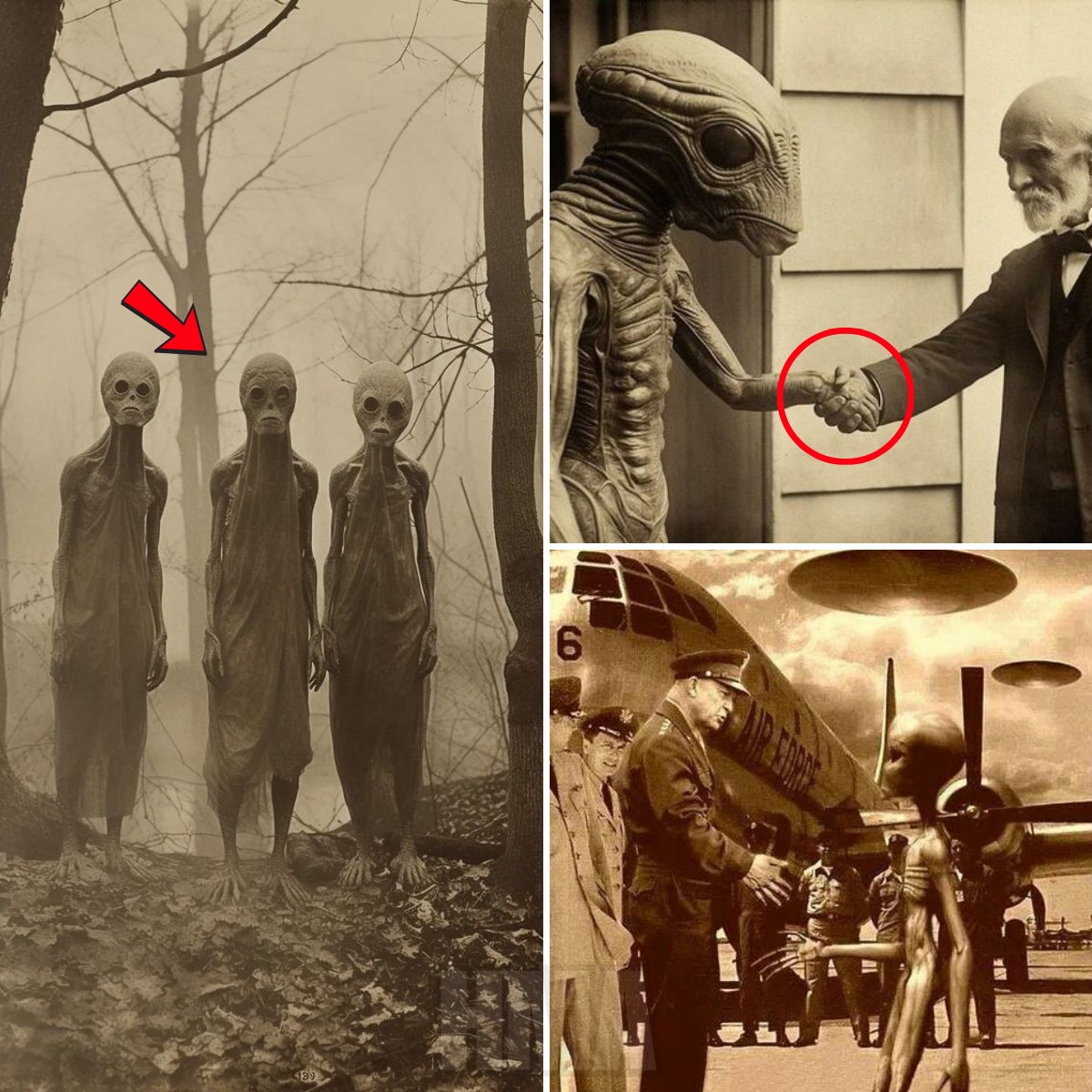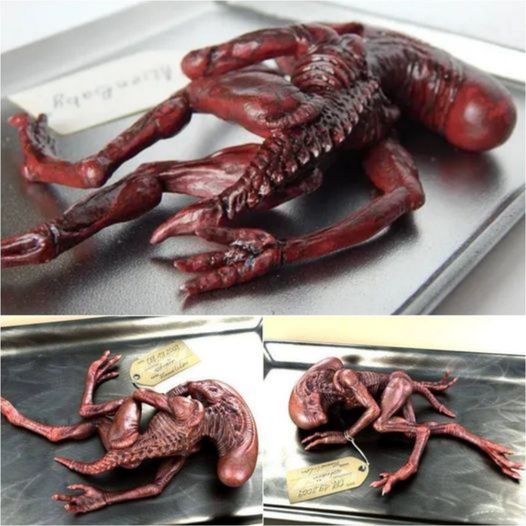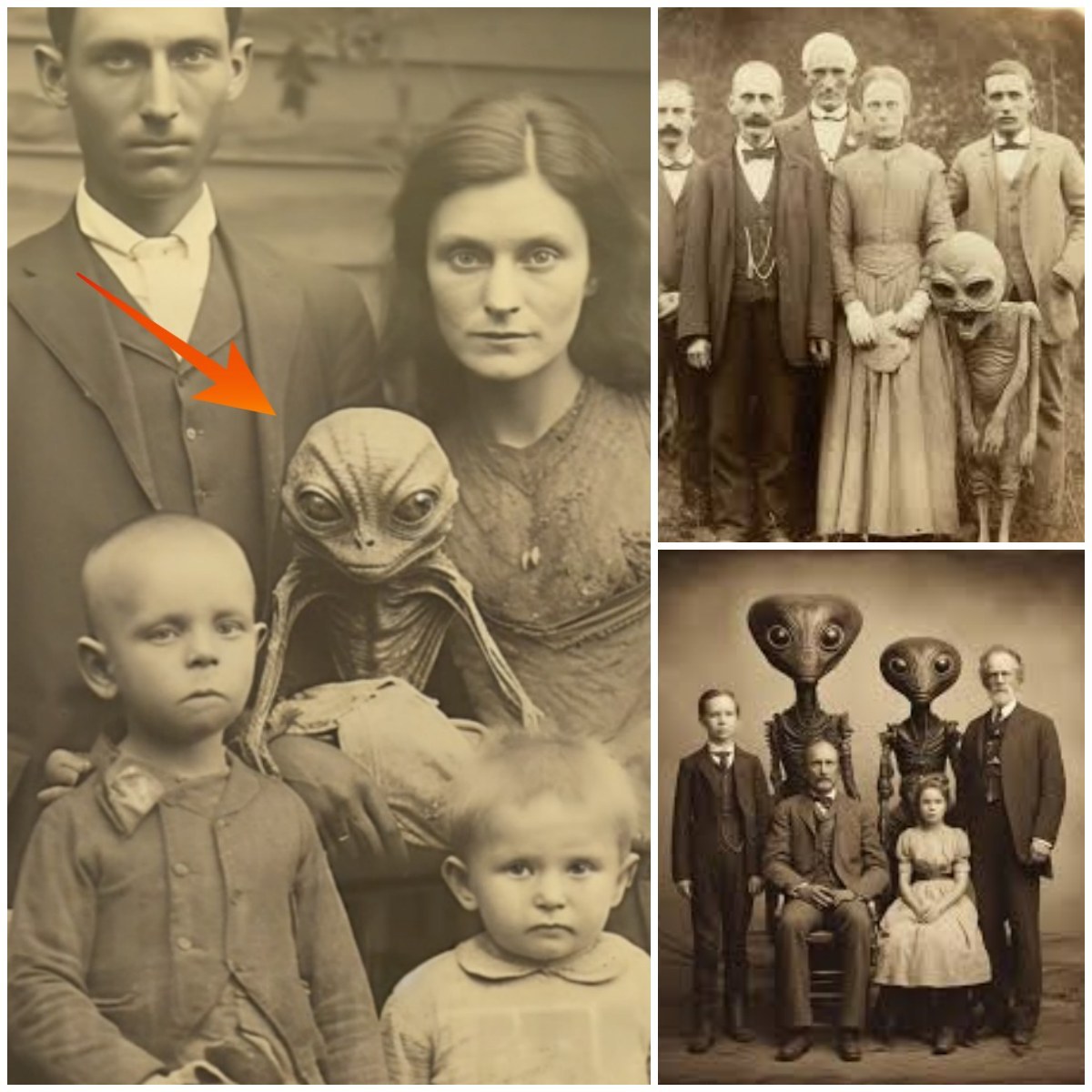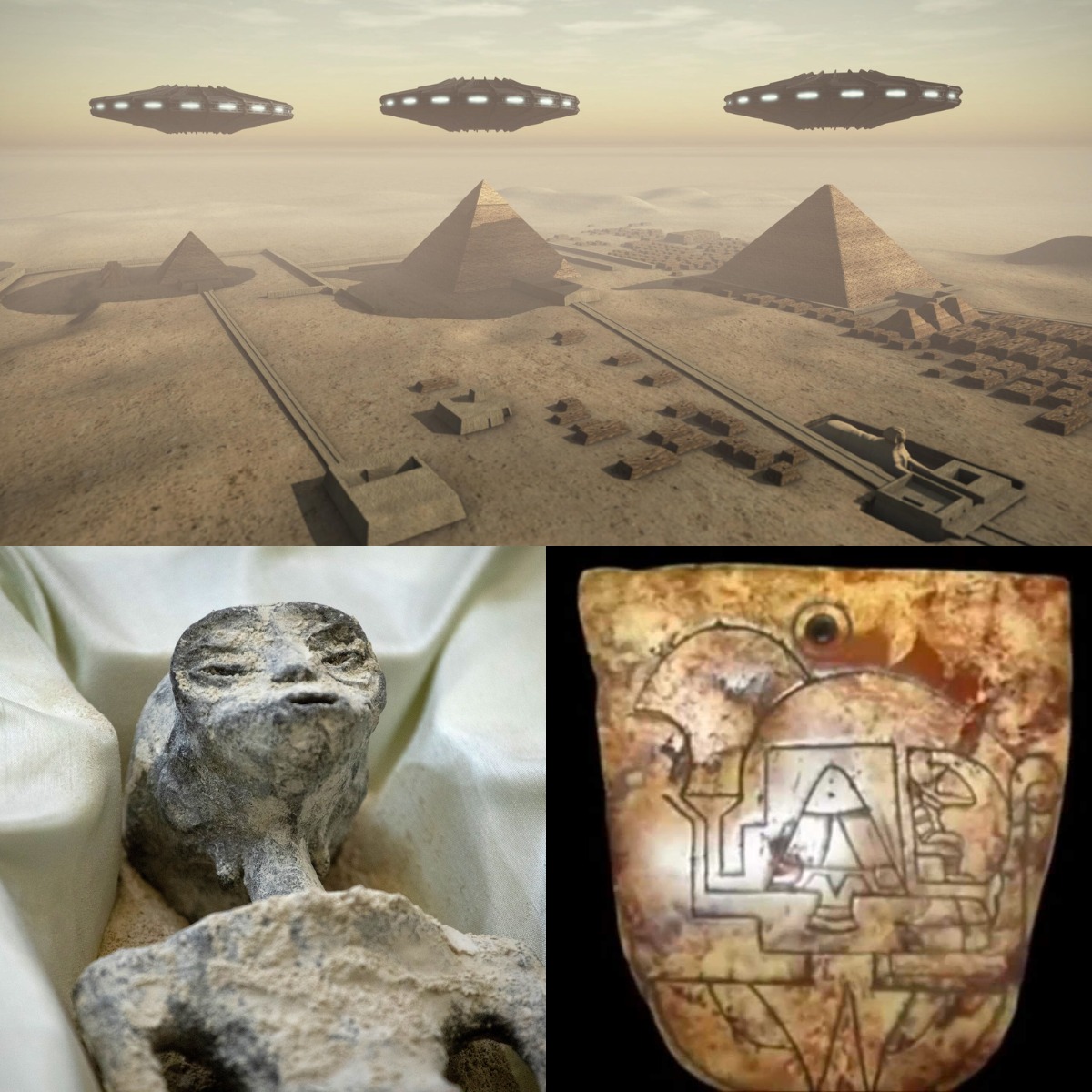Central to Ancient Astronaut Theory and author Zecharia Sitchin’s narrative, is a group of mythic beings known as the Anunnaki, whom he claimed crossed their own DNA with that of Homo erectus in order to create mankind—for the purpose of using humans as slaves to mine gold and other minerals. Today these Anunnaki are often portrayed as the equivalent of the Old Testament creator God.
But what does the cuneiform corpus actually say about the Anunnaki and other mythic beings? How does the version of these beings and their activities presented in Ancient Astronaut media compare with how they were truly represented in the ancient world?
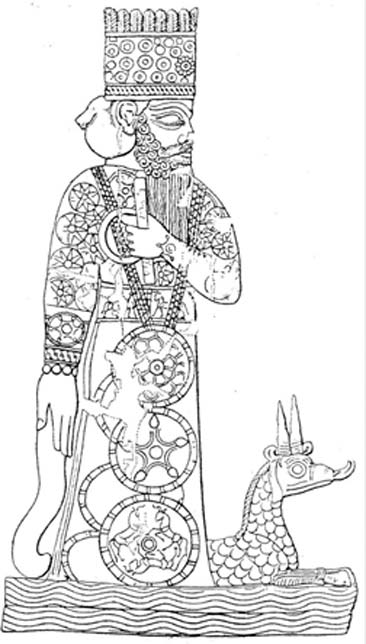
Babylonian representation of the national god Marduk, who was envisioned as a prominent member of the Anunnaki ( Public Domain )
Mount Hermon is located at the southern end of the Anti-Lebanon mountain range, straddling the borders of Syria and Lebanon. Hermon’s highest peak reaches 9,232 feet (2814 meters). Gilgamesh was renowned in the ancient world for obtaining knowledge from the pre-flood (or “antediluvian”) world, as stated by the Ugarit Epic of Gilgamesh (lines 5-9):
“He explored everywhere the seats of power, he knew the totality of wisdom about all things. He who traveled the distant road to Utter-napisti, who crossed the ocean, the wide sea, as far as the sunrise: he brought back tidings from the antediluvian age.”
These passages bring us full circle with Lipinski’s interpretation of the Old Babylonian version of the Gilgamesh epic, where the ancient king journeyed to Mount Hermon—abode of the Anunnaki.
Gilgamesh, the GiantThe concept of ancient knowledge from the pre-flood world is actually inherent in many Eastern traditions. For example, there is a similar story in the apocryphal Book of Jubilees about Kainam, a son of the Biblical Arphaxad:
“And the son grew, and his father taught him writing, and he went to seek for himself a place where he might seize for himself a city. And he found a writing which former generations had carved on the rock, and he read what was thereon, and he transcribed it and sinned owing to it; for it contained the teaching of the Watchers in accordance with which they used to observe the omens of the sun and moon and stars in all the signs of heaven. And he wrote it down and said nothing regarding it; for he was afraid to speak to Noah about it lest he should be angry with him on account of it.” (Jubilees 8:1-5)
Interestingly, there are several ancient sources, which suggest that Gilgamesh himself was a half-god or semi-divine being of gigantic stature. According to the Sumerian Kings List, Gilgamesh was the 5th king of Uruk, who reigned sometime between 2800 and 2600 BC. While there are traditions considering the father of Gilgamesh to be king Lugalbanda, the Sumerian Kings List states that his true father was a “lillu-spirit, a high priest of Kulaba”, and he is described in the epic as “two-thirds god”.

Gilgamesh Statue (Gwil5083/ CC BY-SA 4.0 )
Gilgamesh is believed to have attained victory over the kings of Kish, centralizing Uruk’s power, and tradition has him expanding the city of Uruk, including its temple precinct and walls. In several fragments of a twelfth-century-BC copy of the Gilgamesh Epic discovered at ancient Ugarit, Gilgamesh is described as “Surpassing all (other) kings (!), renowned for bodily stature” (line 16) and again as “Gilgames, renowned for bodily stature, hero 𝐛𝐨𝐫𝐧 in Uruk, butting wild bull!” (lines 18-19). Lines 34-36 of the Ugarit Gilgamesh offer specific details on Gilgamesh’s size: “Eleven cubits was his height, four cubits the width of his chest. A triple cubit was his foot and a reed-length his legs”. According to these measurements, Gilgamesh would have stood between 16 and 18 feet tall (4.8 to 5.4 meters tall). In connection to Gilgamesh being a giant, the fragmentary Book of Giants from the Dead Sea Scrolls names several Nephilim giants as Ohya, Mahway, Hahya, and Gilgamesh.

Gilgamesh, the king-hero from the city of Uruk, battling the ‘bull of heavens’ (0045269/ CC BY-SA 4.0 )
Giants Reigning on Mount HermonReturning to the subject of Mount Hermon, Gilgamesh is not the only ancient giant directly associated with this prominent locale. Several Old Testament books ( The Book of Numbers , Deuteronomy, and The Book of Joshua ) record the battle of Moses and the Israelites against Og, an Amorite king of Bashan. In Deuteronomy 3:11 (KJV), Og is described as “of the remnant of giants”, and his bed (or sarcophagus) is measured as nine cubits long and four cubits wide, meaning that Og himself may have been 12 or 13 feet in height (approx. four meters tall).
In Joshua 4:5 (KJV), it is revealed that Og “reigned in mount Hermon, and in Seclah, and in all Bashan”, a region which would include the slopes of Mount Hermon and the Golan Heights.
Entities of the UnderworldStill another factor connecting the Anunnaki with the story of the Watchers and their offspring is their status as underworld beings. In Mesopotamian cycles, the Anunnaki are frequently depicted as “fates” or judges of the dead who occupy the subterranean realm or function as “spirits of the earth”. In tablets discovered at Nippur from around 2000 BC, the Anunnaki are “the seven judges”, underworld entities that accompany Ereshkigal, queen of the subterranean realm. When Ishtar descends and is brought before the assembly, they fasten their “eyes of death” upon her, causing her to perish.
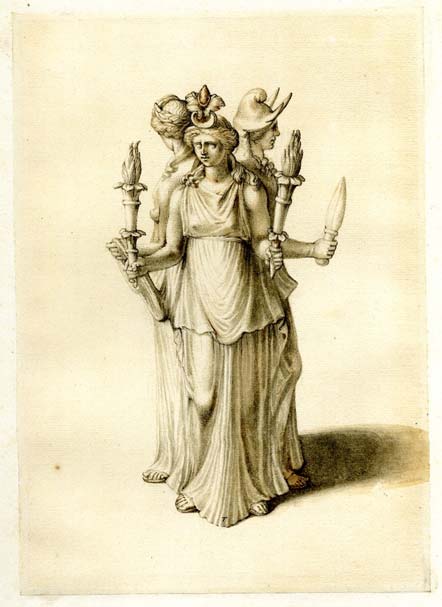
An early nineteenth-century drawing of a statuette of Hecate, with whom Ereshkigal was syncretized. ( Public Domain )
Cast Down into HellThe mountain abode of the Canaanite god, El is also frequently associated with secret or hidden natural springs and underground rivers. Lipinski associates these connotations with the sources of the Jordan River, one of which is the spring of Banias, originating at the foot of Mount Hermon. He furthermore elaborates that the mountain was considered in ancient times to cover “one of the outlets of the Deep or Ocean from which came the waters of the Flood…an eruption of the subterranean ocean on which the earth was believed to rest.”
In 1 Enoch, God commands the archangel Michael to “Go, bind Semjaza and his associates who have united themselves with women…bind them fast for seventy generations in valleys of the earth…”(1 Enoch 10:11-12), while Raphael is commanded, “Bind Azazel hand and foot, and cast him into the darkness: make an opening in the desert, which is in Dudael, and cast him therein.”(1 Enoch 10:4)
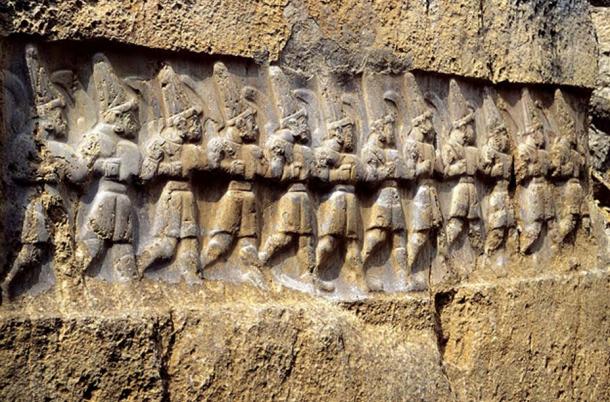
Ancient Hittite relief carving from Yazılıkaya, a sanctuary at Hattusa, depicting twelve gods of the underworld, whom the Hittites identified as the Mesopotamian Anunnaki. (Klaus-Peter Simon/ CC BY 3.0 )
There are also references to the fate of the Watchers in New Testament books, including Second Peter , which states, “…God spared not the angels that sinned, but cast them down to hell, and delivered them into chains of darkness…” (2nd Peter, 2:4, KJV). The word translated as “hell” in this verse is actually the Greek Tartarus, referencing the deepest underworld of Greek mythology—the prison of the Titans.
Not only were the Titans giants, but like the Anunnaki, they were the offspring of an earth goddess (Gaia) and a sky deity (Uranus). Some scholars consider it likely that the Greek mythos was largely based on the older Eastern Mythologies. The same concept is repeated again in the Book of Jude, verse 6, which mentions, “the angels which kept not their first estate, but left their own habitation, he hath reserved in everlasting chains under darkness”.

One of the giant Titans, Atlas, who was punished to bear the heavens on his shoulders for all time. ( Public Domain )
The True Identity of the AnunnakiIt is widely known that the archetypal myth cycles of the Mesopotamian and Near Eastern traditions share a common origin, and that the subjects of these cycles also appear in the Biblical, extra-Biblical, and even Quranic texts. The purpose of this article is to identify the specific mythic concept behind the Anunnaki in the ancient world.
Contrary to much of the popular literature and other media of today, the evidence recorded by the academic research of scholars and a comparative study of the actual cuneiform and other ancient texts indicates that the true identity of the Anunnaki is to be found in the Eastern tradition of a group of half-gods, spawned by cross-breeding between divine beings and mortal females at Mount Hermon in the Anti-Lebanon mountain range. These beings are often associated with knowledge from the world before a great deluge and were later assigned roles in the underworld. This would suggest that rather than making the Anunnaki the equivalent of the “Elohim” who created man in the Book of Genesis; they should more properly be compared to the Nephilim and the fallen angels described in Genesis Chapter 6, 1 Enoch, and other extra-biblical texts.
